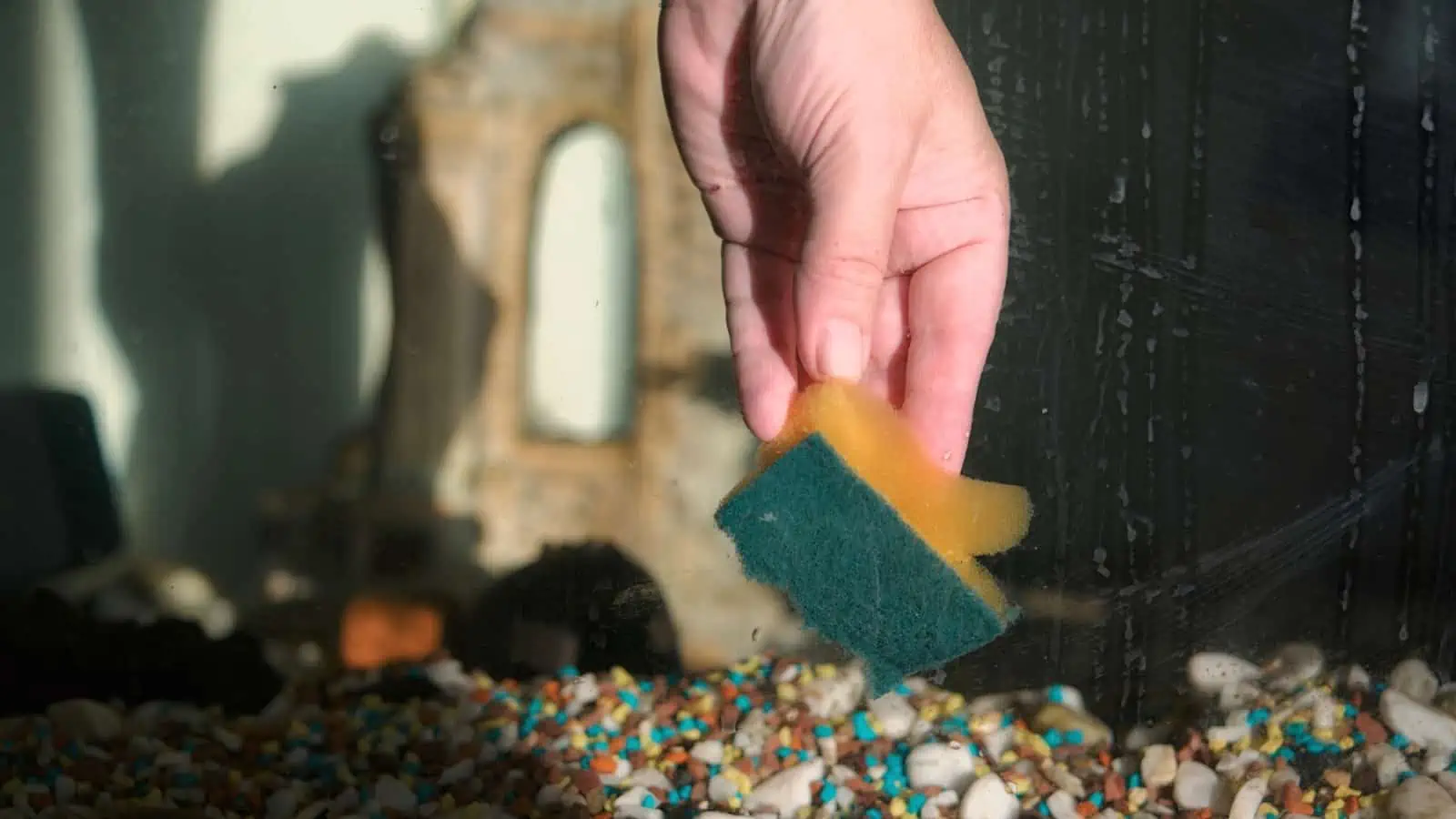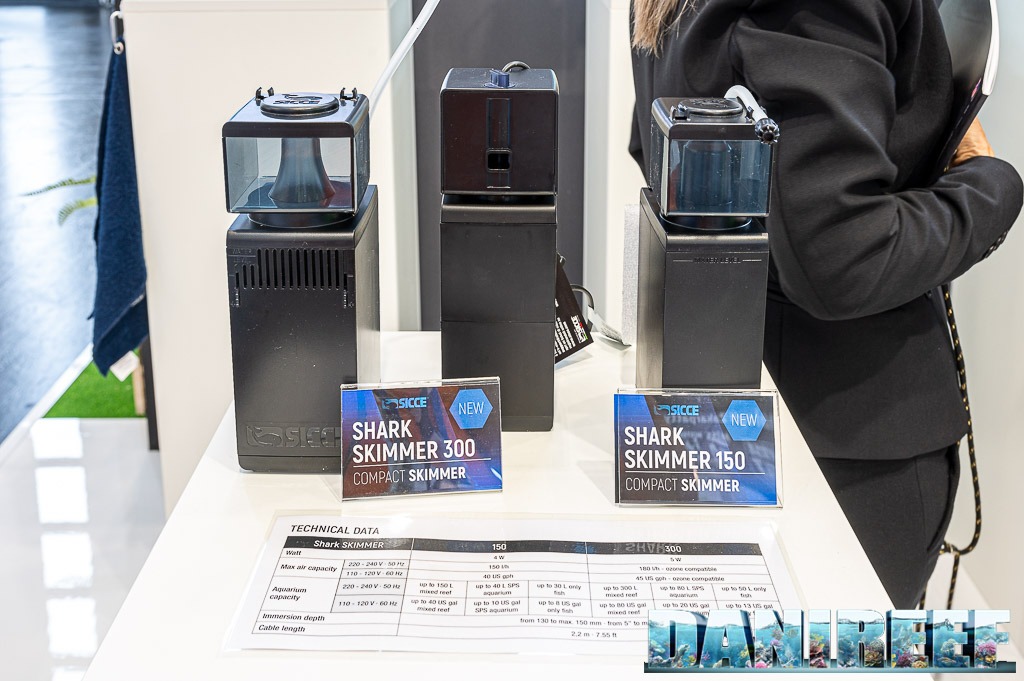As an avid hobbyist with over 40 years of experience in fishkeeping, nothing brings me more joy than watching my fish swimming happily in a crystal-clear tank. Like many of you, I’ve struggled with stubborn algae and limescale stains that obstructed my view.
However, my problem was solved when I stumbled upon a miraculous cleaning product for my tank, and that’s what I want to share with you in this article!
Key Takeaways
- Distilled White Vinegar as a Wonder Cleaner: The article introduces white vinegar as an effective, affordable, and safe solution for cleaning aquariums and tackling stubborn algae and hard water stains without harming your precious fish.
- Comprehensive Cleaning Guide: We provide step-by-step instructions on cleaning tanks, decorations, plants, and filtration equipment with a vinegar solution, ensuring a thorough clean while preserving beneficial bacteria.
- In-Situ Cleaning Option: For those who prefer not to move their fish, the article offers a method to clean the aquarium using vinegar with the fish still inside, ensuring minimal disruption to the aquatic environment.
What’s My Secret?
So, how do I keep my aquarium sparkling clean?
You’ll be surprised and relieved to learn that it’s not a complicated or expensive method. I use good old-fashioned distilled white vinegar and a little bit of elbow grease!
Vinegar easily removes stubborn hard algae and water stains from your tank’s glass, ornaments, and even living plants without costing you a ton of cash or endangering your precious fish by exposing them to nasty chemicals.
Let’s dive in and find out how!
First of all, what can white vinegar tackle?
Green Spot Algae
You can remove many types of algae by using a non-abrasive sponge or cloth to simply rub them away. However, Green Spot algae is particularly difficult to get rid of because it forms stubborn spots that stick firmly to the glass, decorations, and plants in your tank.
Hard Water Stains
When water contains minerals like calcium, it can lead to stubborn stains that appear white on glass surfaces. These stains can even accumulate on any filter equipment that isn’t underwater.
Luckily, white vinegar can quickly remove these stains. Best of all, you can use white vinegar to clean and disinfect your filter unit without killing the crucial colonies of beneficial bacteria it contains or harming your fish.
Unlike other cleaning methods that might not last or leave behind unsightly blemishes, vinegar is a strong and safe solution that can remove even the toughest stains. So, if you’re looking for an affordable and effective way to clean your aquarium, keep reading!
What You’ll Need
There’s nothing more annoying than beginning a job only to find you have to stop what you’re doing to go and get something. So, before you start, gather together everything you need.
- White vinegar
- 2 clean sponges
- Table salt
- Razor blade scraper
- Tap water
- Hosepipe
- Old toothbrush
- Magnetic algae cleaner
You can find everything that you need on the shelves at a grocery store, in your local fish store, or online at the handy links I’ve provided.
Method

Whether you have fish in the tank or it’s empty, you can use the simple method described below to clean and disinfect it.
Personally, I always clean new ornaments and plants with vinegar before adding them to my fish tanks to kill off any harmful bacteria or parasites that could be hiding there.
Deep-Clean Your Tank
First, you need to give your aquarium a really thorough clean.
This method works well on both acrylic and glass tanks. However, don’t get carried away when scrubbing tough stains on plastic or acrylic tanks, or you could scratch the surfaces.
Step 1 – Empty the Aquarium
Start by emptying your aquarium. Move all your fish and other livestock to a separate tank, remove decorations and plants, and then empty the tank completely.
Step 2 – Loosen Stains With Water
To get rid of algae and calcium deposits on the glass, dampen a clean sponge with tap water and wipe down both the inside and outside of the aquarium.
It’s important to be gentle while using the sponge, especially if you have an acrylic tank, so you don’t scratch the surfaces.
MR.SIGA Heavy Duty Scrub Sponge
- Premium green scrubbing material made in Italy helps to tackle tough chores, durable and long lasting.
- The non-abrasive yellow sponge side wipes away the dirt and particles, can be used with dishwashing liquid if preferred.
- They are strong enough to clean stubborn dirt, yet gentle enough to use on special glassware.
Step 3 – Apply Table Salt
Using the same sponge, wet it and add a small amount of table salt to the sponge. Go over the whole aquarium again, gently scrubbing any stubborn stains. Leave the salt in place for five minutes or so without allowing it to dry out completely.
Step 4 – Rinse the Tank
Next, you need to get rid of all the salt and loose debris from the tank. The best place to do that is with the tank resting on the grass close to a faucet or on a rubber mat in a bathtub.
Connect the hose to the faucet, and give the tank a thorough rinse.
Step 5 – Scrape off Stubborn Stains
If you have a plastic or acrylic aquarium, skip this step!
Take your razor blade or scraper and use it to remove hard calcium deposits and algae from the viewing panes. Take your time and the very gentle so as not to scratch or damage the glass.
Step 6 – Use White Vinegar To Clean the Tank
Make up a solution of 1 part white vinegar to 1 part tap water.
Use a clean sponge to apply the solution to the whole aquarium and give it a good scrub to remove any remaining calcium stains and algae.
Remember to clean the glass on the tank’s exterior too!
Step 7 – Rinse the Aquarium Thoroughly
Complete the job by rinsing the aquarium thoroughly with clean tap water.
Allow the tank to dry completely.
Clean Plants, Decorations, and Peripherals
Once your aquarium is clean, you can move on to cleaning your plants, decorations, and other peripheral equipment. Remember to rinse everything thoroughly in clean water before replacing the items in the fish tank.
Step 1 – Clean Living Plants
A mild solution of white vinegar and water in a ratio of 1 part vinegar to 1 part tap water is highly effective at getting rid of heavy accumulations of algae on living plants.
All you need to do is soak the plants in the solution for a maximum of 5 minutes. Don’t worry about the plants; the vinegar solution won’t harm them.
Step 2 – Rinse Your Plants
Give the plants a thorough rinse under cool running water to get rid of any loosened algae and vinegar solution. Any stubborn spots can usually be shifted by very gently rubbing the plant leaves between your fingers.
When you’re done, carefully replace the plants in your clean aquarium.
Step 3 – Clean Tank Decorations
Next, turn your attention to cleaning your tank decorations. I find this method works extremely well on driftwood, resin ornaments, and rockwork.
Take a bucket, and make up a solution of vinegar and water in the ratio of 1 part tap water to 1 part vinegar. Put all your decorations, including stones, rocks, wood, and resin decor, into the solution and allow them to soak for at least 20 minutes.
Step 4 – Remove Stubborn Stains
Remove the decorations from the solution and rinse them thoroughly under clean running water. Now, take an old toothbrush and scrub any stubborn stains. Sometimes, I find it works best to dip the toothbrush in undiluted white vinegar and use it on any heavily stained areas.
Step 5 – Clean Aquarium Lid, Filters, Etc.
Hard water staining can be a problem for aquarium peripherals, such as lids, cover slides, filter boxes, etc. But you can get rid of it by using a solution of water and vinegar in the ratio of 1 part tap water to 1 part vinegar.
To clean and disinfect filter units, take out all the filter media and put it into a small container of tank water to keep it from drying out. That’s crucial for the well-being of the colonies of beneficial bacteria that you’re cultivating in the media!
Disassemble the filter unit. Soak all the individual components in your vinegar and water solution for at least 10 minutes.
Rinse all the filter unit pieces thoroughly in clean water to remove any traces of vinegar and loose debris. Reassemble the filter unit and replace the media.
How To Clean Your Fish Tank With the Fish in Situ
If you don’t want to take down your tank completely or disturb your fish, you can still use distilled white vinegar to get rid of Green Spot algae from the glass.
To do that, take your aquarium magnet cleaner and dribble some white vinegar onto the scrubbing side. Now, use the magnet cleaner to gently scrub the green algae patches to get rid of them.
And now you’re done! You have a sparkling clean aquarium again with no unsightly patches of algae or water stains to ruin the view of your beautiful fish.
Final Thoughts
In my experience of fishkeeping, maintaining a clean, healthy environment is critical for the health and longevity of all your livestock. In addition, accumulations of calcium deposits can damage your filtration system, leading to its failure and costly replacement.
But by using a simple, inexpensive household vinegar, you can soon have your aquarium looking as bright and clean as it did the day you first set it up.
Please let me know how you got on if you decide to clean your tank using vinegar. Don’t forget sharing is caring, so be sure to hit the share button before you go!






